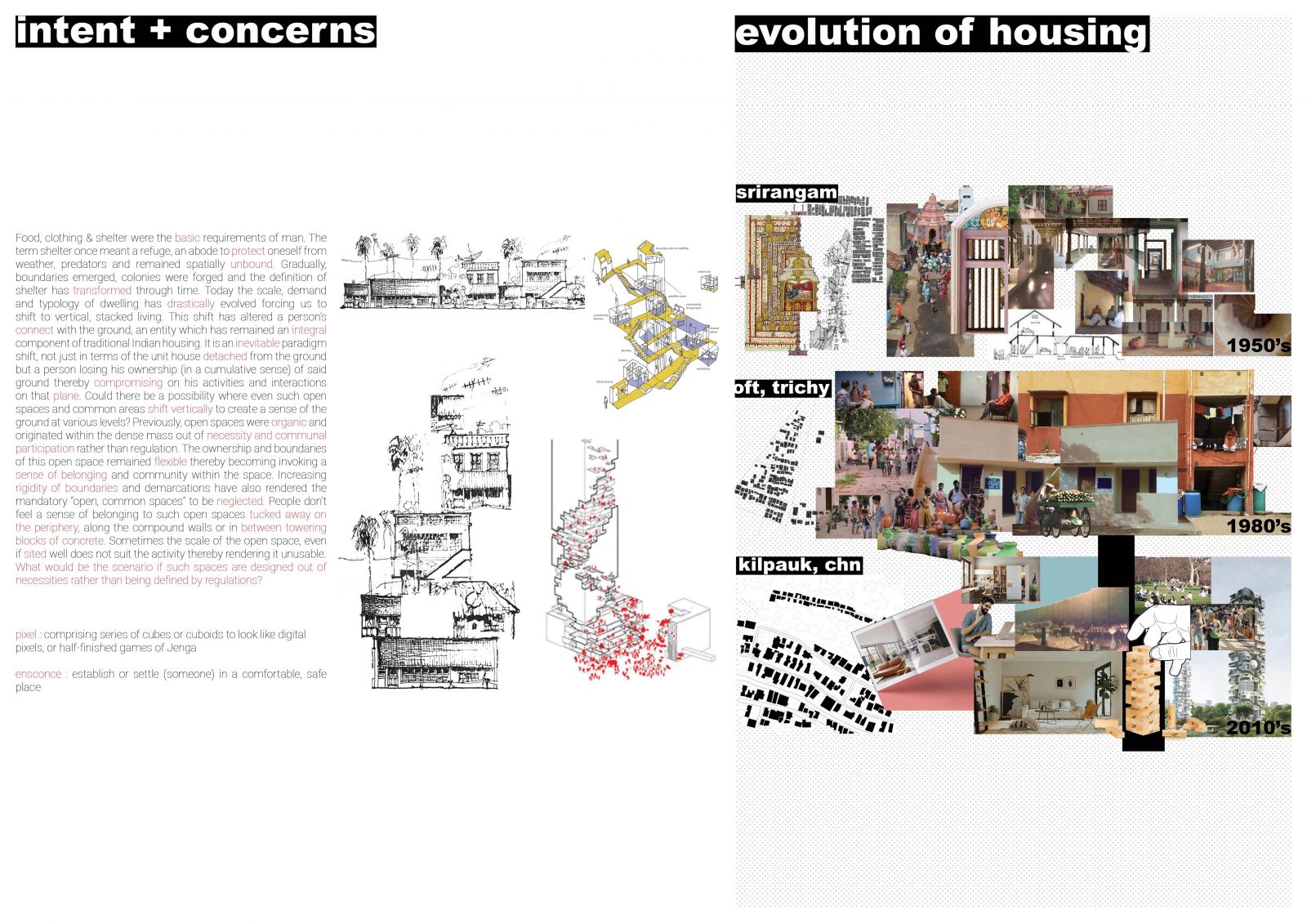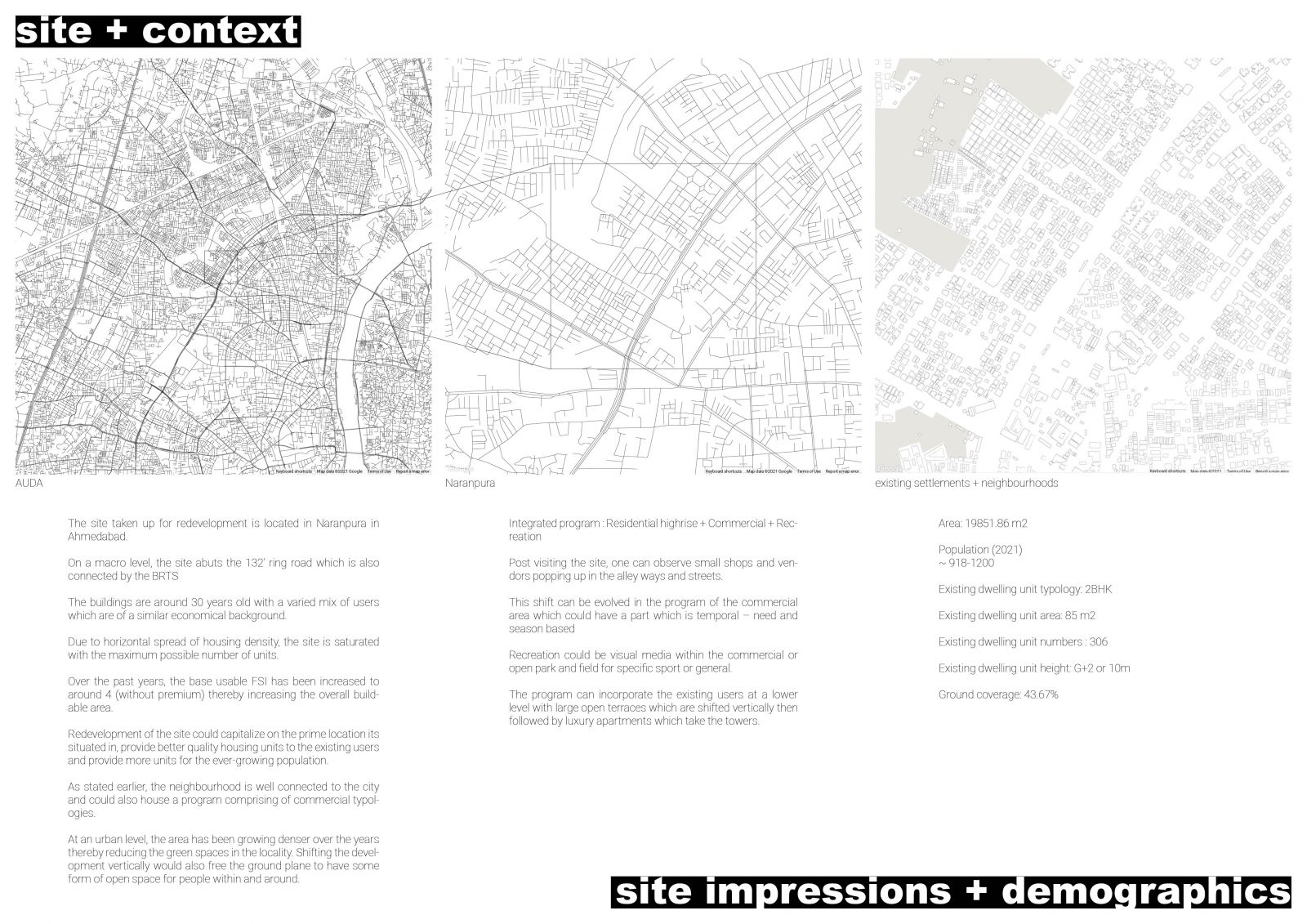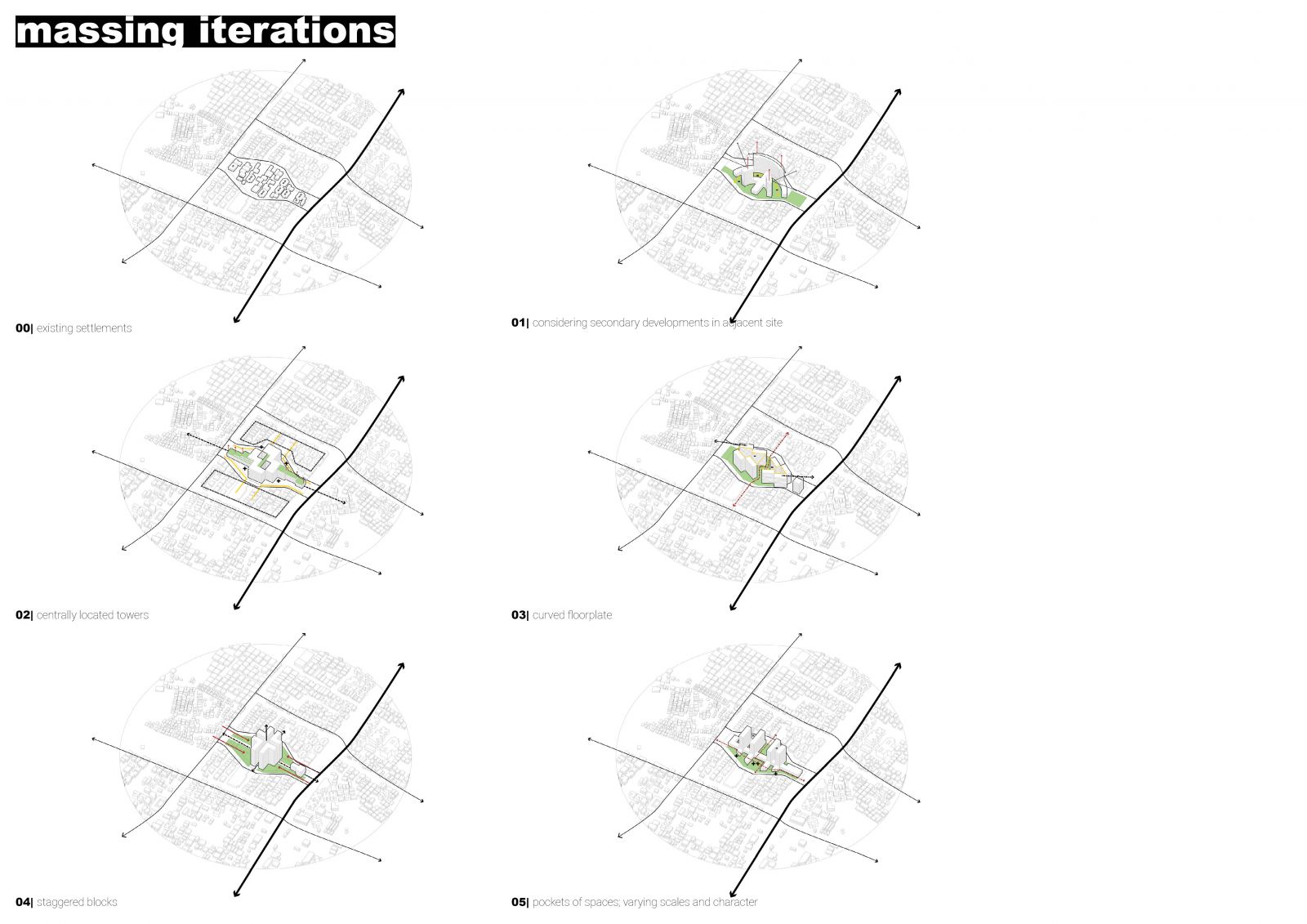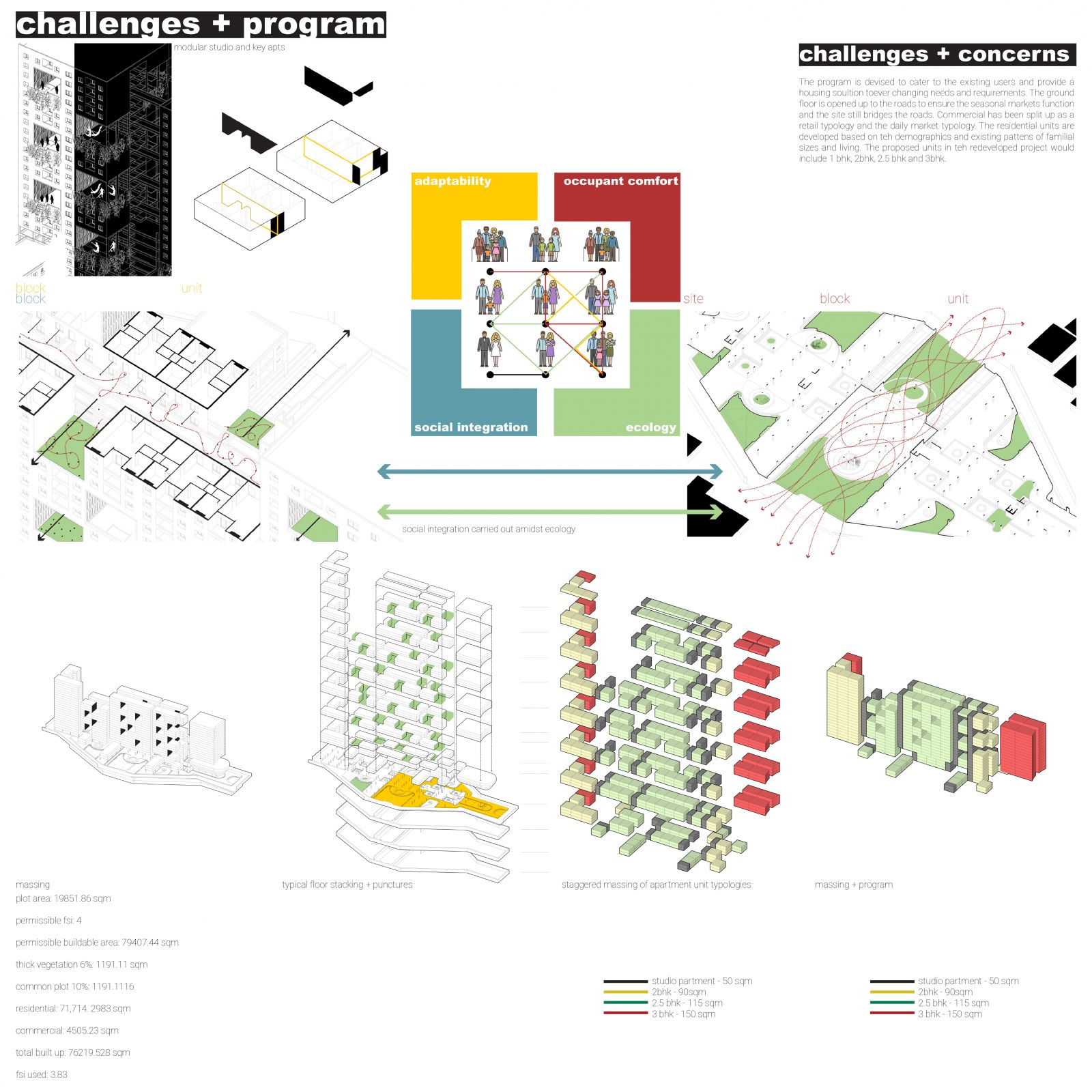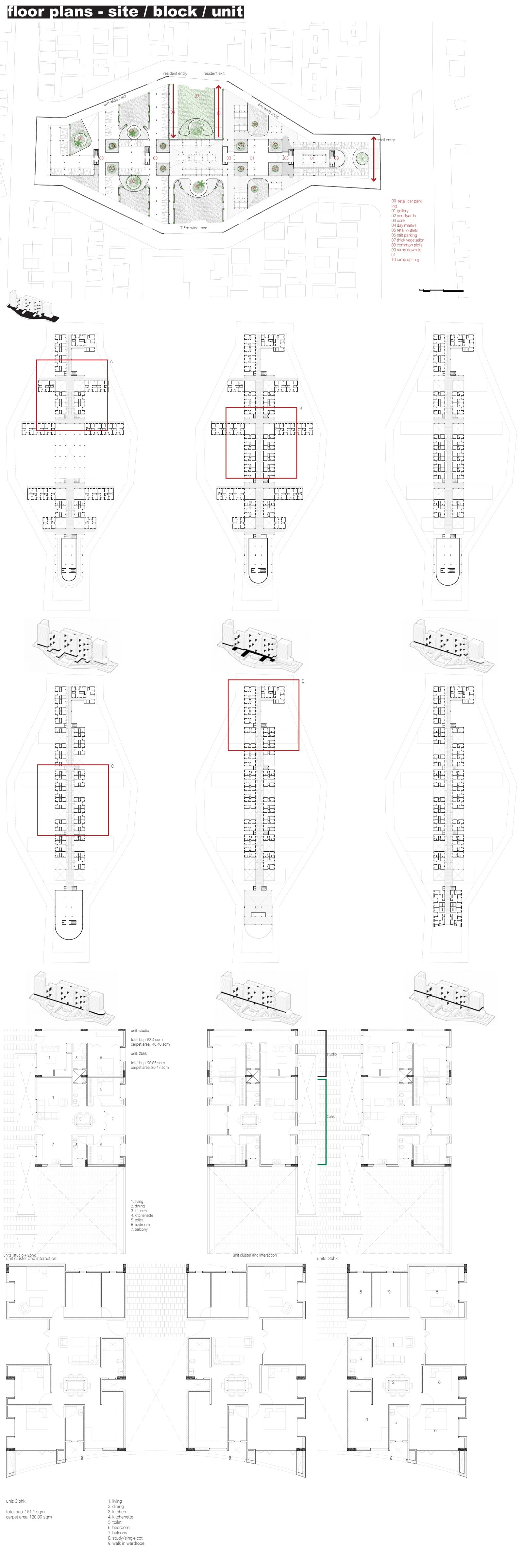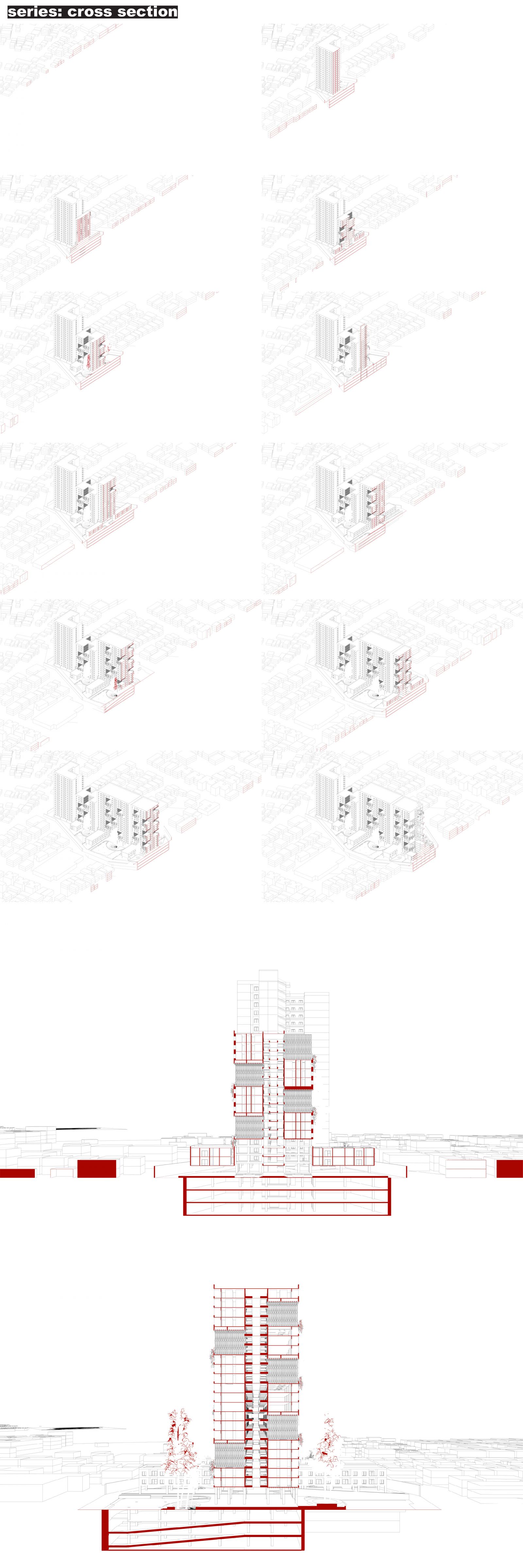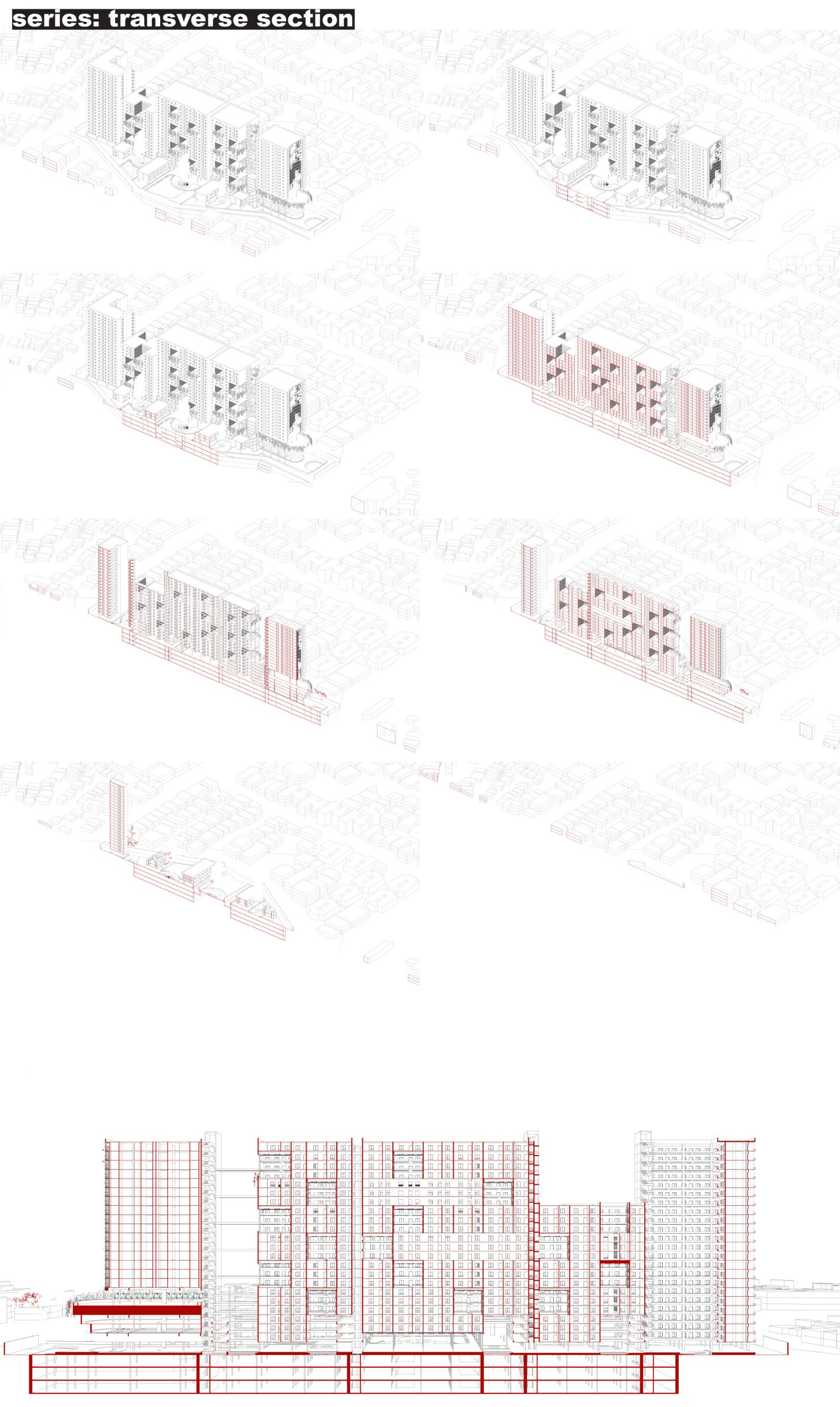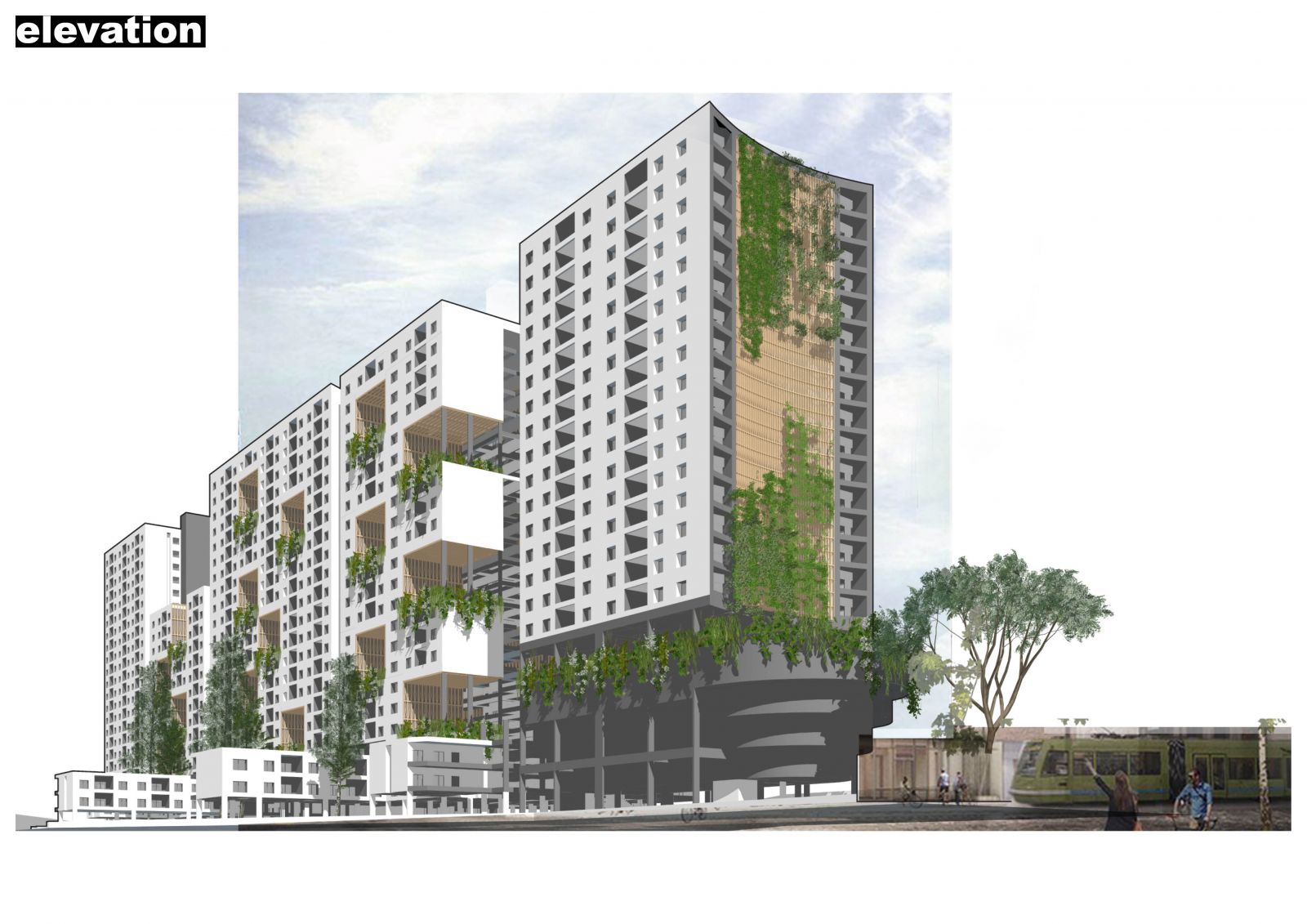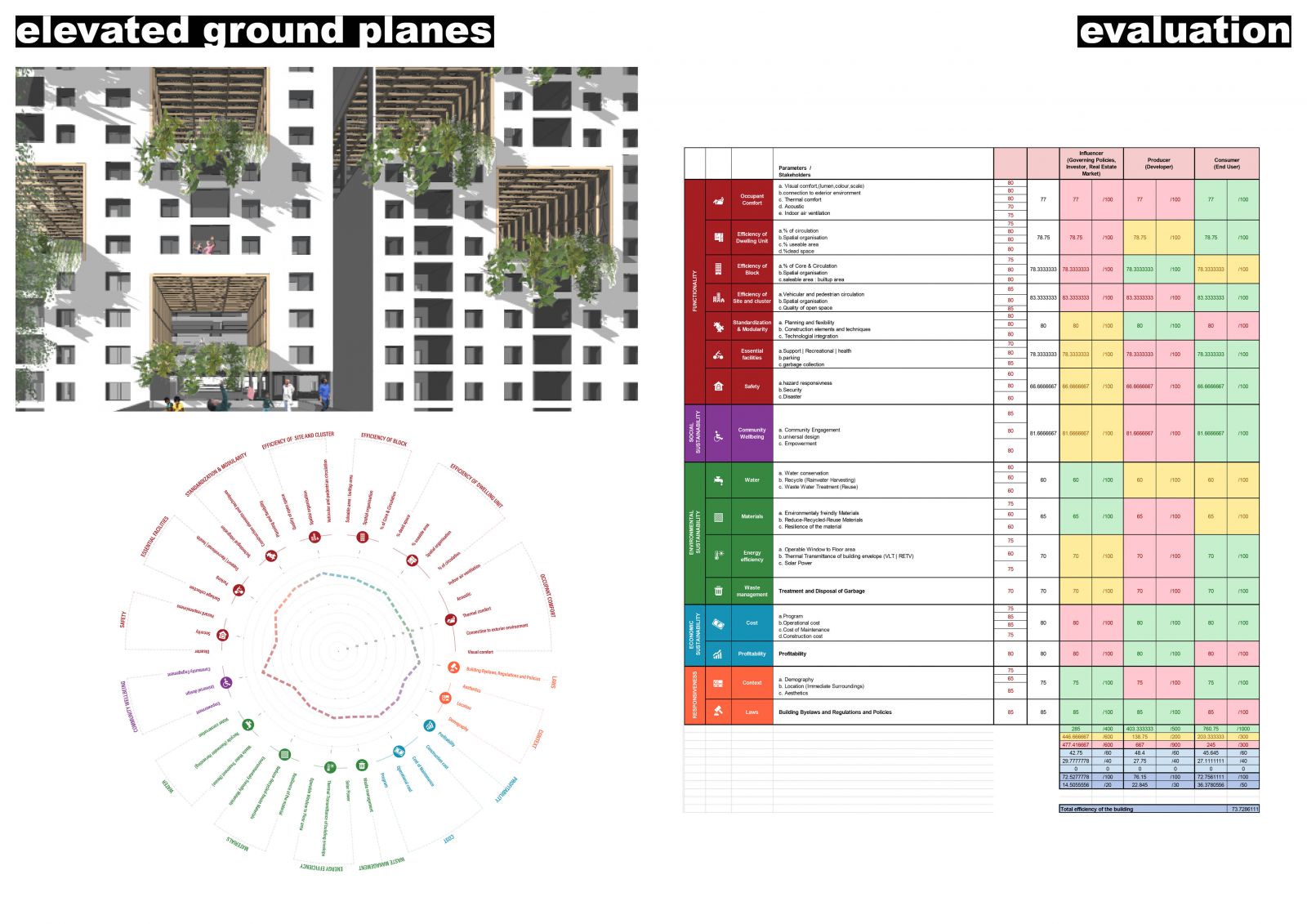Your browser is out-of-date!
For a richer surfing experience on our website, please update your browser. Update my browser now!
For a richer surfing experience on our website, please update your browser. Update my browser now!
Food, clothing & shelter were the basic requirements of man. The term shelter once meant a refuge, an abode to protect oneself from weather, predators and remained spatially unbound. Gradually, boundaries emerged, colonies were forged and the definition of shelter has transformed through time. Today the scale, demand and typology of dwelling has drastically evolved forcing us to shift to vertical, stacked living. This shift has altered a person’s connect with the ground, an entity which has remained an integral component of traditional Indian housing. It is an inevitable paradigm shift, not just in terms of the unit house detached from the ground but a person losing his ownership (in a cumulative sense) of said ground thereby compromising on his activities and interactions on that plane. Could there be a possibility where even such open spaces and common areas shift vertically to create a sense of the ground at various levels? Previously, open spaces were organic and originated within the dense mass out of necessity and communal participation rather than regulation. The ownership and boundaries of this open space remained flexible thereby becoming invoking a sense of belonging and community within the space. Increasing rigidity of boundaries and demarcations have also rendered the mandatory “open, common spaces” to be neglected. People don’t feel a sense of belonging to such open spaces tucked away on the periphery, along the compound walls or in between towering blocks of concrete. Sometimes the scale of the open space, even if sited well does not suit the activity thereby rendering it unusable. What would be the scenario if such spaces are designed out of necessities rather than being defined by regulations?
View Additional Work